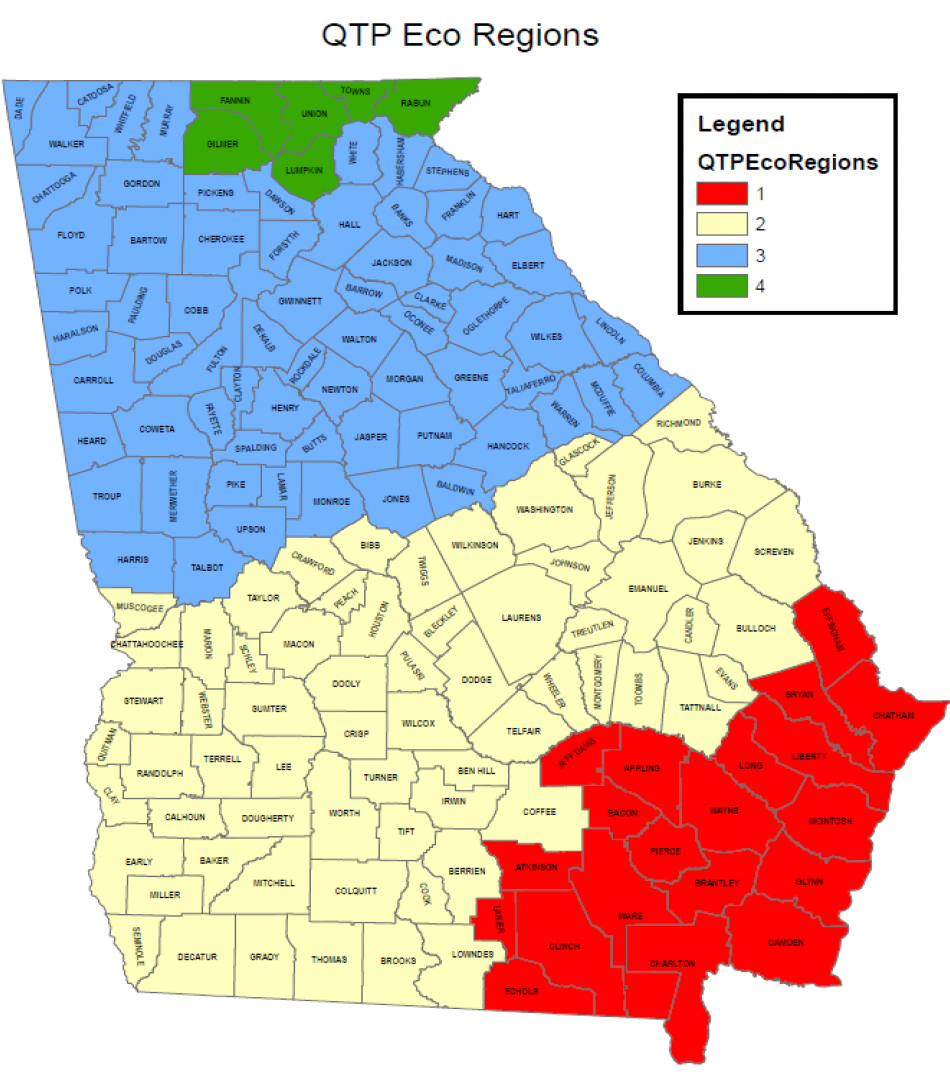The Georgia Department of Revenue (DOR) recently proposed this year’s Qualified Timberland Property (QTP) Appraisal Manual that included updates to the table of per-acre values of commercial timberland, determined by ecological region and soil productivity classification. Of concern to forest landowners and Georgia Forestry Association (GFA) members, all four QTP regions saw value increases ranging from 55–140 percent greater than the 2023 values. Click here to view the QTP Appraisal Manual →

In 2017-2018, GFA supported the passage of a constitutional amendment that established the QTP program, a new class of timberland property that would support the fair and uniform taxation of 4.7 million acres of forestland not enrolled in Conservation Use Valuation Assessment (CUVA) or the Forest Land Protection Act (FLPA). The intent of the QTP program is to bring equity and fairness to how ad valorem taxes are assessed by empowering the Department of Revenue (DOR) to assess forestland rather than 159 different boards of assessors.
The calculation of Qualified Timberland Property includes:
- Identification of Ecoregion and Conservation Use Value Assessment District
- Classification of soil types and associated productivity ratings (W1-W9)
- Determining the fair market value of qualified timberland property based on a weighted formula that provides for 50 percent of the value determined on a fair market basis and 50 percent of the value determined on an income basis.
- Sets a floor value for the tax rate that can be no lower than 175% of the value for Forest Land Conservation Use (FLPA)
Below are the values for the ecoregions as defined by DOR across Georgia:

GFA has some concerns about the recent fair market valuation increases because they likely represent land values that are outside of the true value of the timberland. “These very large increases give concern that there may be other land uses included in the market sales data,” said GFA Tax Committee Member and Senior Tax Manager with Weyerhaeuser. “For example, does the DOR market sales data improperly include transactions of ‘timberland’ that are purchased for homesteads and other transitional or speculative uses?”
DOR held a hearing on August 10 to discuss the new changes to the QTP Appraisal Manual and is in the process of providing responses to the comments brought up during the meeting. Once DOR makes any additional changes, the manual will be sent to the Secretary of State and will be officially adopted 20 days (or about 3 weeks) after confirmation.
In the past several decades, the three preferential tax programs that have been established have helped qualifying landowners reduce their property taxes by conforming to a set of management and conservation rules. However, unforeseen challenges have arisen with each program, which has required certain measures to be added or amended in the original bill text to protect the intent of the bill. In this case, QTP has no cap on how much the appraised value of timberland can increase each year, whereas CUVA and FLPA do have cap restrictions within a covenant period. There is no covenant period required in QTP. As we continue to monitor these changes, it is still unclear whether that will be necessary in this case. GFA will continue to keep you informed while always working to ensure sensible taxes and regulations for Georgia’s landowners.
“The legislative intent of the QTP program, which was supported by the majority of Georgia voters, is to encourage the conservation of 4.7 million acres of forestland that was not enrolled in current conservation tax programs,” said GFA President & CEO Andres Villegas. “With high tax rates from artificially high land valuations, these landowners may be faced with increased pressure to sell their property or convert it to another use.”
For questions on this issue, please reach out to:
Destin Hobbs
Forest Policy Coordinator
(706) 424-3655
destin@gfagrow.org
Richard Royal
Tax & Policy Advisor
(229) 328-6060


